Barkerville
Billy Barker had excavated more than fifty vertical feet of worthless dirt and gravel. He was searching for “placer” gold (pronounced ‘plasser’) in an area that was producing only token amounts. Little did he know that the next few inches of gray sandy soil would change his world, and the world around him, forever.
At fifty-two feet, the richest placer strike in the history of the world would begin to yield phenomenal amounts of pure gold. Miners would hand-pan pounds – not ounces – in a few hours. Over the next thirty years, more than $13 billion (today’s dollars) would be pulled out of the ground, literally building the new province of British Columbia. Unusually for such strikes, hard-rock (mined) deposits were also found in addition to the placer gold, keeping the area mining active for many years.
At one point, Barkerville was so large and prominent that it was the largest town west of Chicago and north of San Francisco. Vancouver, Canada was considered likely to fade into anonymity because it was so far from Barkerville. Of course, over the course of time, the gold petered out. Along with the shrinking mining activity, the town faded away as well. Fortunately, many of the old buildings, and a few of the structures, have been preserved, maintained, and even refurbished a bit. Barkerville is now under the care of the BC Heritage organization.
We decided to take the 50-mile side trip off of Trans-Canada 97, and we stayed at the only open campground (the others open in the next few weeks). We paid $15 apiece and took the tour of the town. To really evoke the temper of the times, all the town staff members dress in period costume. When engaged in conversation, they’ll gladly chat up the events of “the day”, talking very much as if they were the original inhabitants. All in all, a charming and informative experience.
This is the early church, and as it presently stands has been raised a total of 40 feet over the years. Mining activities denuded the local forests, and floods and mudslides were routine, gradually building up the entire base of the valley and the course of the creek.
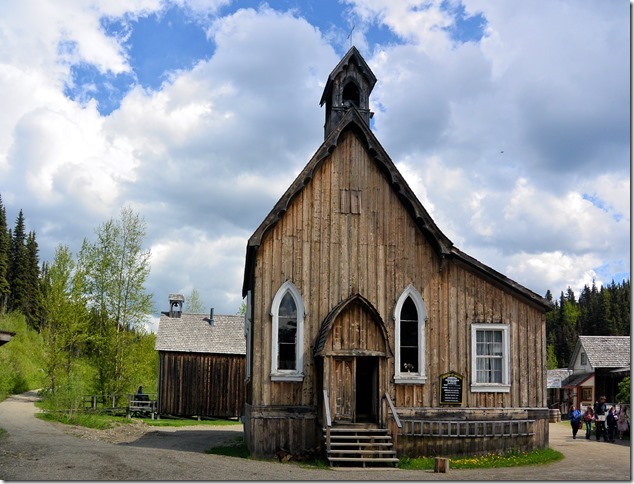
Here are some early town residents during one of the many floods. The mains streets became a quagmire.
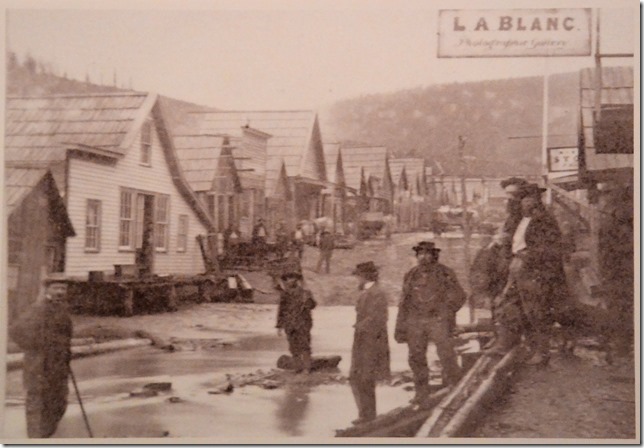
While we visit, the blacksmith applies his trade for curious tourists. He talks about life on the frontier, and how the metal must be heated and pounded just-so to make tools and implements. Kids are just loving this up-front and personal history lesson.
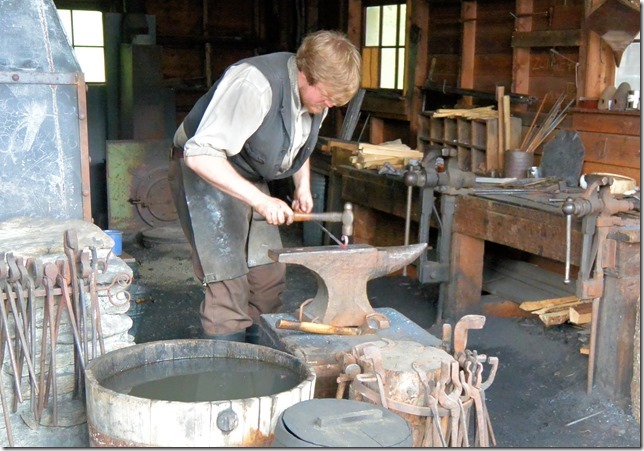
Some of the early rooms and furnishings are nicely preserved. Living back then was scaled down and a bit more spartan than today’s standards. Here’s a typical bedroom, just wide enough for a dresser and small bed.
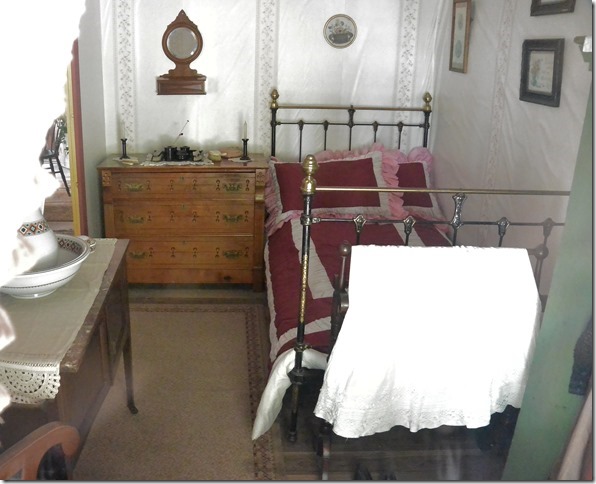
Not to mention this snug little arrangement, an even more severe set of accommodations — apparently adequate for four Chinese miners.
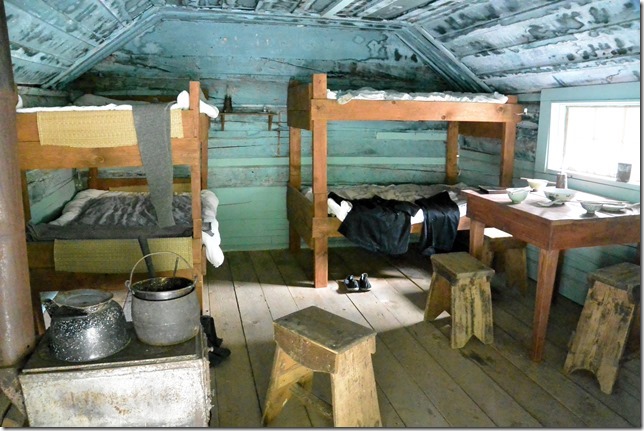
Authentic coach rides are available. The horses are in full 19th-century livery. The stage is incredibly original, even down to the leather-strap suspension/springs! Over and over again, I marvel at the ingenuity and engineering that were possible with little more than Iron-Age technology. The weathered woodwork is the water flume that brings flow from the stream over to the water wheel.
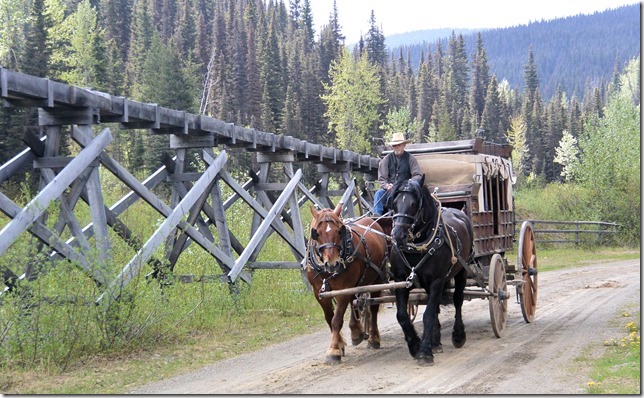
Local woman (in full costume) and her daughter (not so much) pause at the business end of the water flume – an 18-foot-diameter Cornish water wheel used to drive a winch to haul gold-bearing gravel up a mineshaft for above-ground processing.
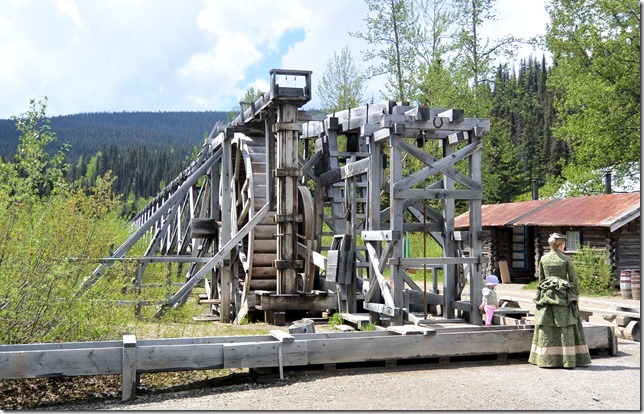
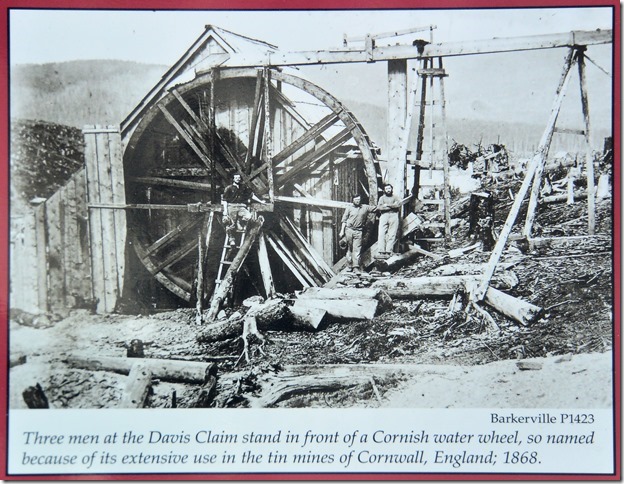
The period dress does wonders for the sense of visiting the old town as it really was. Some of the tourists even get into it and either rent or buy costuming for the occasion.
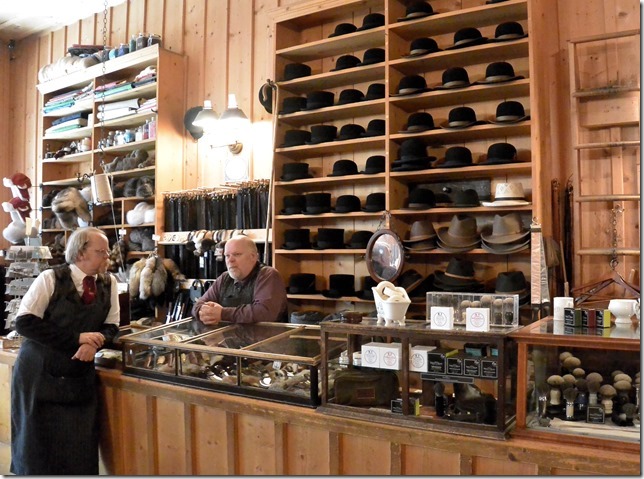
Frontier gold town construction techniques – no more sawing or milling done than is necessary. Time is a-wastin’ – best to get out there and dig for gold!
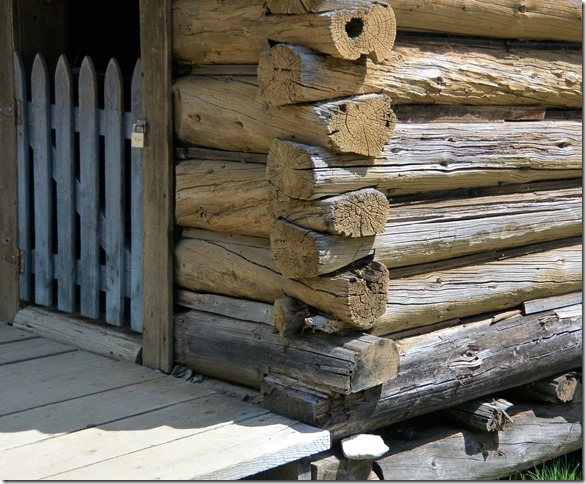
A miner’s cabin, built right over the entrance shaft. Sluice box in the front yard. Short commute.
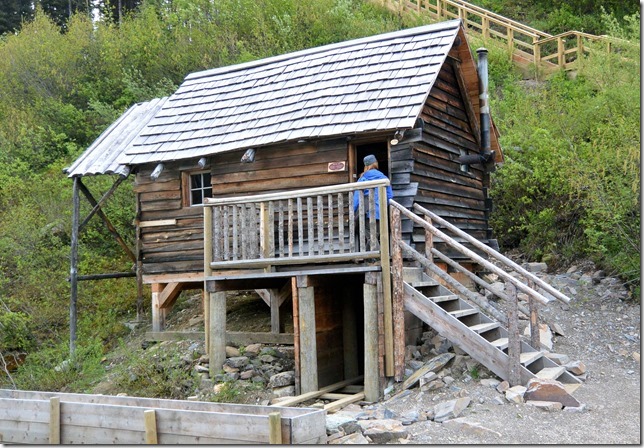
The assay office was a cornerstone of any frontier gold-mining town. The value of your gold, and thereby your claim and your future, was established here with certified people and equipment.
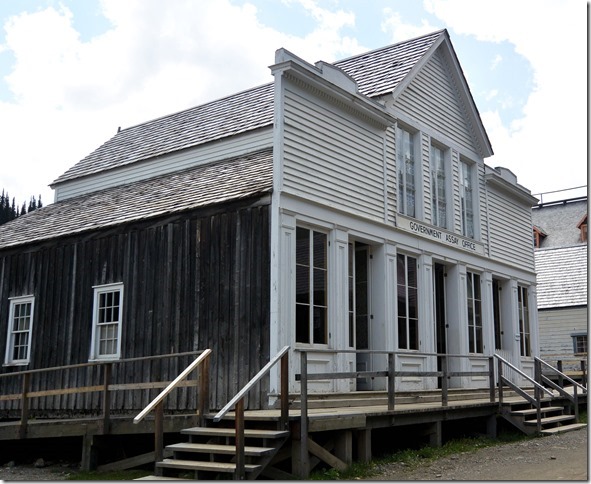
The old and the new – present day photo from one of the strip-mined gaps, and an 1868 shot from further downstream. Back in Barkerville’s heyday, no trees were left for nearly three miles around the town – building and firewood consumed them all.
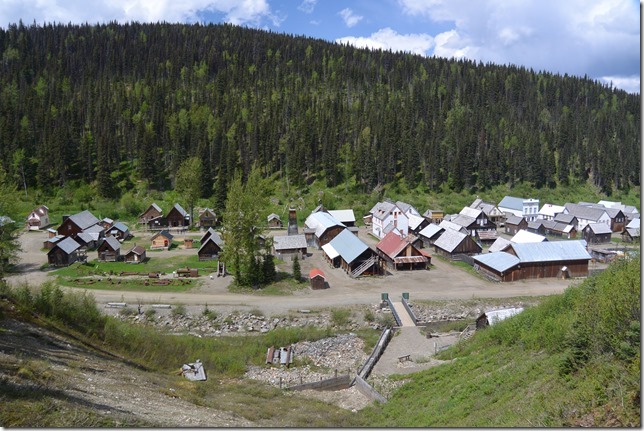
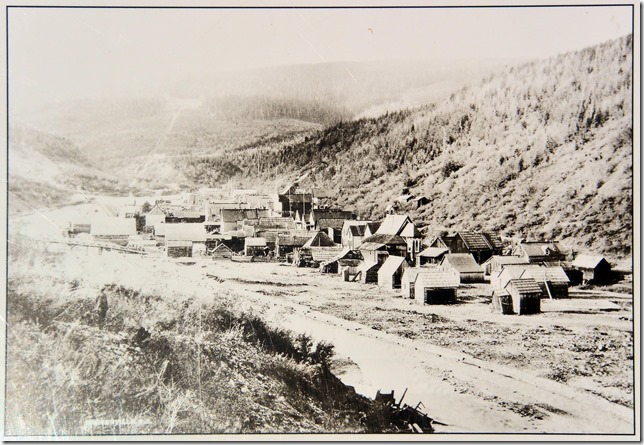
The town/attraction is probably more interesting for kids than adults, to be honest about it. Shops have been converted to ice-cream sales and China-manufactured tourist souvenirs. It’s a bit more like Columbia, California than being in a true ancient township. But overall, it’s worth the visit for the great “players” and the window into history.
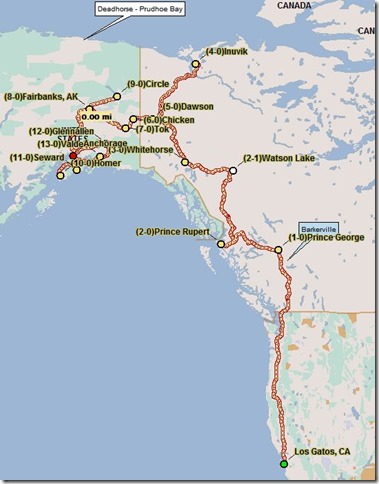
- Miles driven: 1,635
- Days traveling: 13
- Miles from home: 1,386

Thanks for the updates. From the photos it sure does look like it is similar to Columbia; we were just there and the girls loved it.
Thanks again..Greg and Karen..keep on trucking….and writing..
tony sr.
Thanks Greg and Karin. Amazing photos and beautiful write-up. Fascinating history. If you can find out the history of the name of the town Chicken, that would be interesting too. Safe travels, looking forward to more stories.
My current understanding is that the town was supposed to be named Ptarmigan, the state bird.
Nobody knew how to spell it, but it tastes like chicken. I’ll confirm when we are up there.
cool stuff Greg. My kids would love it.